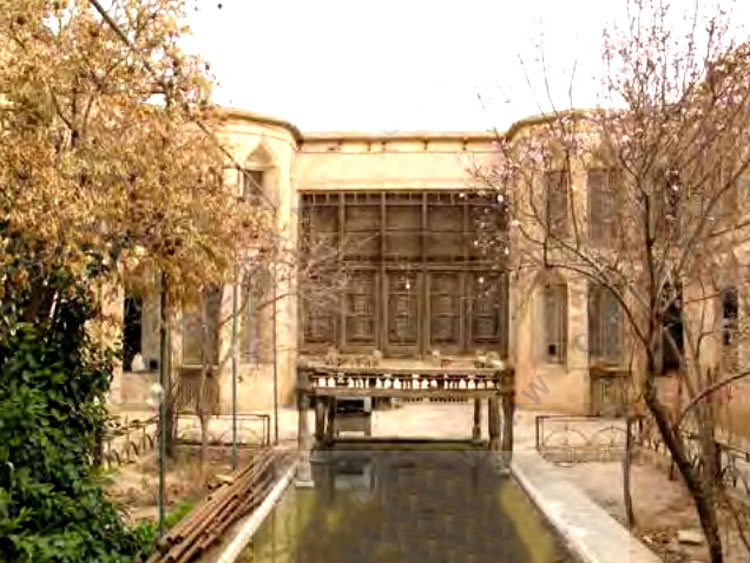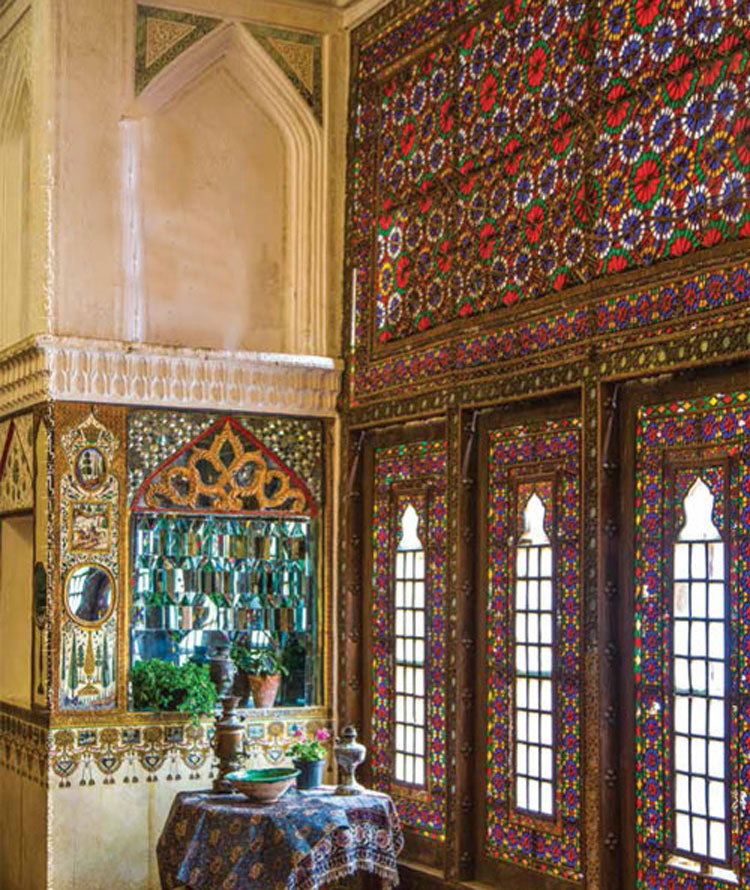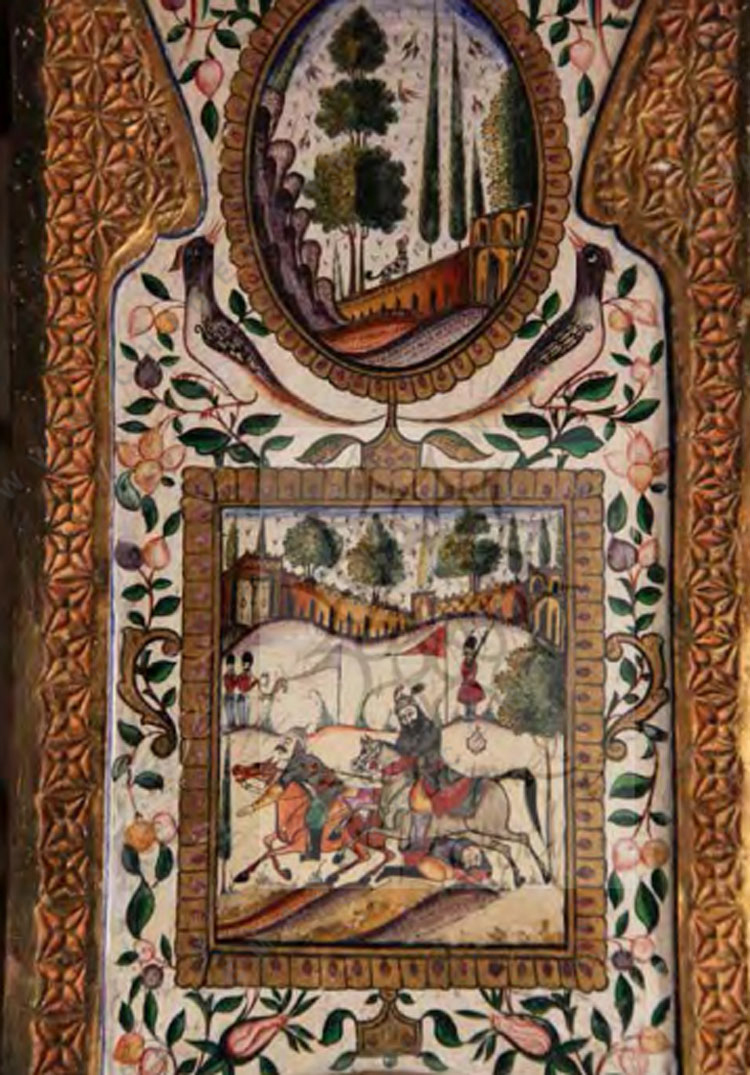Mavedat House of Yazd is revered as one of the most beautiful and admirable examples of the 13th-century aristocratic houses in Yazd, used as Ni'matullāhī Khanaqah (a term for Sufi meetinghouse)
Mavedat House was founded in 1907 by Mohammad Ibrahim Lari, one of the famous and renowned Yazdi people. Mohammad Ali Mavedat, RIP, bought this house in 1963. The building is known as Mavedat House ever since.
Architecture of Mavedat House of Yazd
The outer walls of Mavedat House of Yazd, like all other old houses in Yazd, are covered with cob; however, the facade of the house is the only part of the exterior facade in which brick is used. The facade is plain and has no sitting platform or decoration. The shape of the courtyard is rectangular and the pond and two gardens on both sides give a pleasant atmosphere to the courtyard, which looks like a small garden.

Unique paintings of Ne'matollai Khanaqah in Yazd
The mirror artwork, thematic paintings and decorations of Ne'matollai Khanaqah in Yazd have distinctive features. One of the paintings, which is of special importance, is the scene of the Prophet Muhammad’s ascension. It was painted on the upper part of the wall in the western room. This painting was engraved with the signature of "The art of Farrokh Khan in Sha'ban month in 1286 AH". The engraving of this religious work with the theme of the ascension of the Prophet Muhammad (PBUH) represents the history of the use of this building as a khanaqah, and at the same time raises many regarding the origin of this religious depiction and its relation to the khanaqah.

The Murals of Yazd Houses in the Qajar period
It is worth mentioning that during the Qajarid era, designs and illustrations were influenced by naturalist images, like iris and lily flowers, and various kinds of birds and other patterns.
The decorations and murals in the houses of the Qajar period of Yazd are influenced by the Zand and Qajar houses decoration in Shiraz. The paintings of plants, birds, and flowers in this plaster molding expresses the commonality that the artist had in other artistic skills such as carpet design, book cover design and Persian pencil box design. This chain link between the figures of the interior decorations of Qajar houses in Yazd represents a process and a technical and aesthetic continuity in this particular period. In this process, we can discern the common principles in the implementation of this collection of plaster work of the walls in comparison with the Iranian painting applied in large scales on walls and ceilings, with adhering to the principles of designing, drawing, coloring, golden illuminated manuscript, framing, pottery, birds and flowers, animal patterns, plant illustrations, and arabesques. The creators of these works were of ordinary people and learned the profession in a traditional way, practically and under the supervision of a master. The works of wall plastic works in Yazd's aristocratic houses are valuable examples of this painting style.
Adapted from the Journal of Chideman by Dr. Ali Akbar Sharifi Mehrjerdi

On January 17 1999, Mavedat House of Yazd was registered in Iran National Monuments List with registration No. 2249.
For more information about Mavedat House of Yazd ( Ne'matollai Khanaqah ), please contact Raadina Online Support.
Online Support














